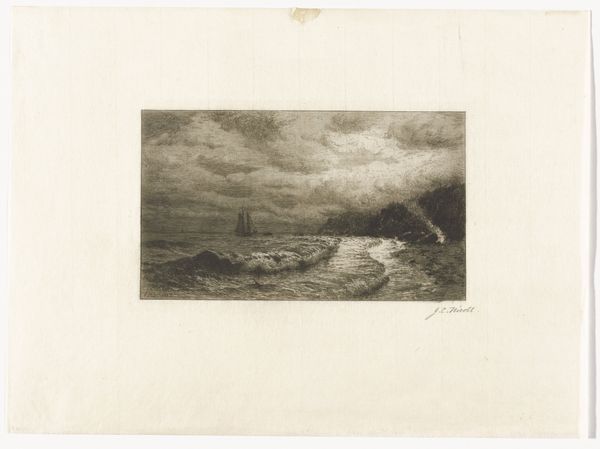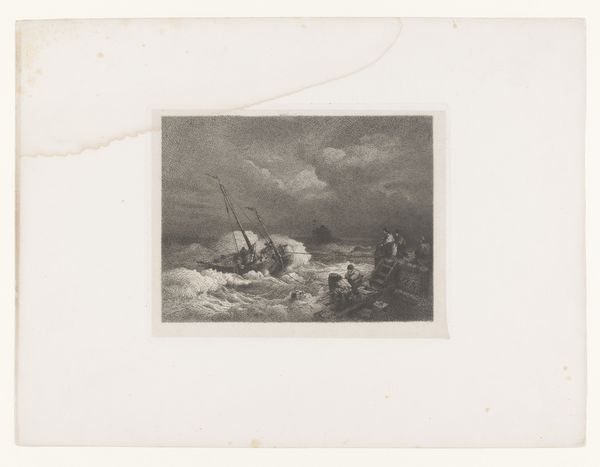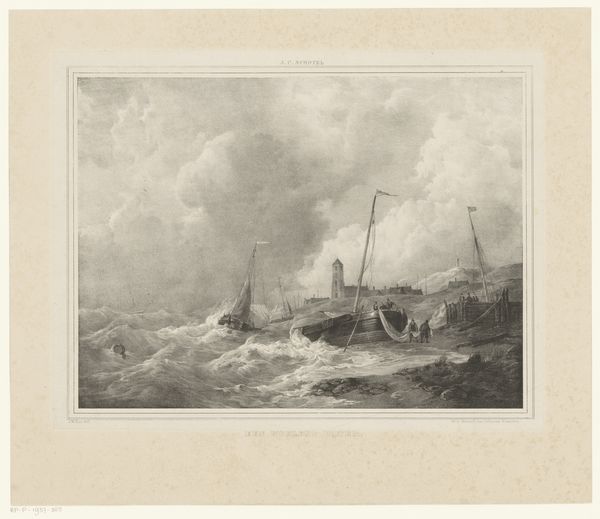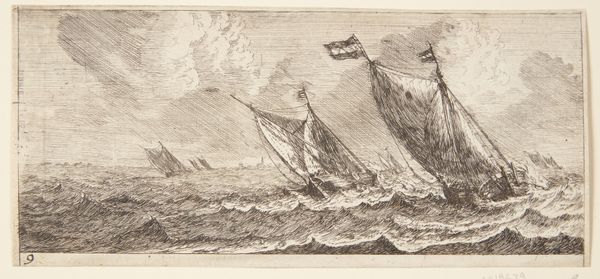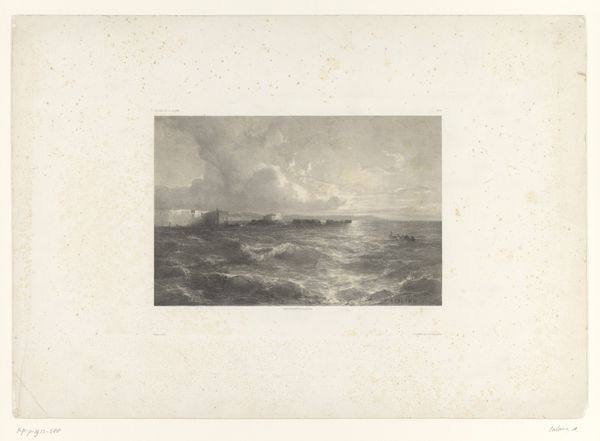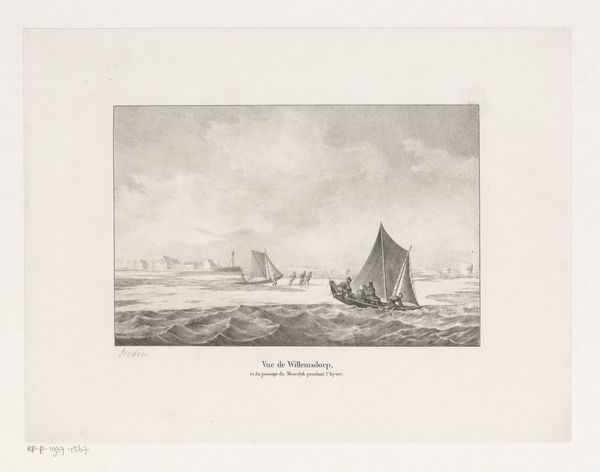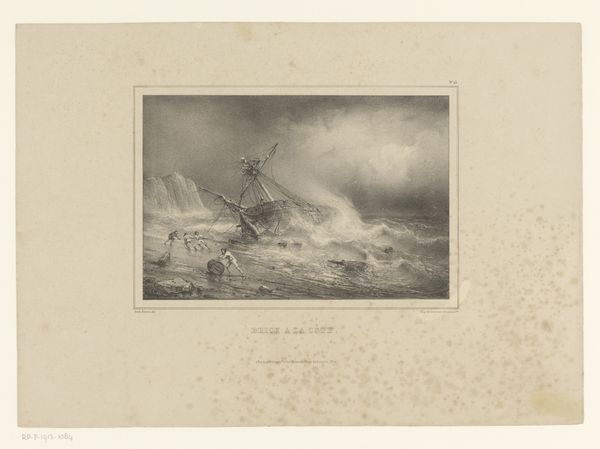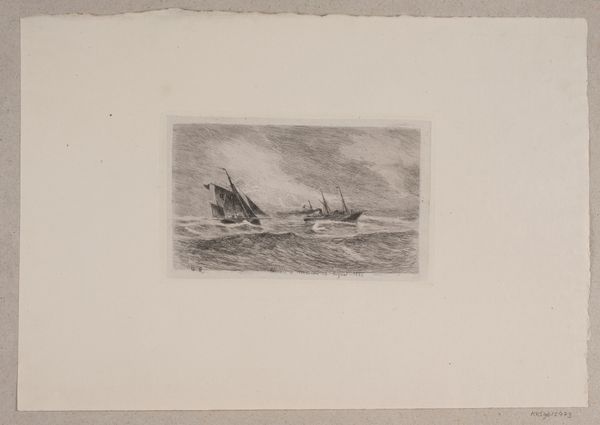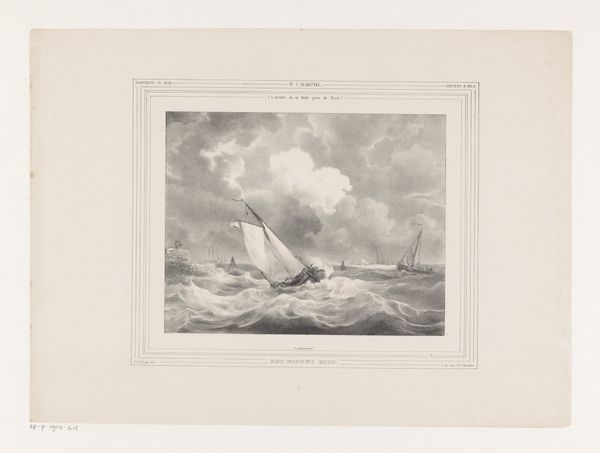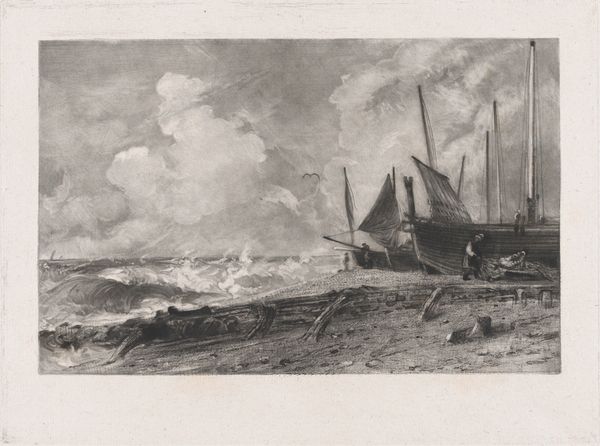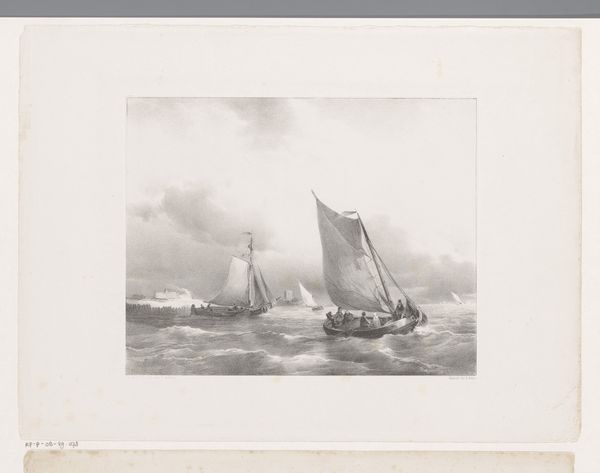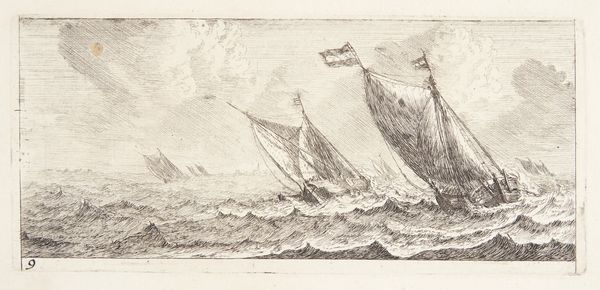
Dimensions: 55 mm (height) x 114 mm (width) (bladmaal)
Curator: This print, "An Evening Stroll in a Proprietor's Kitchen" by H.P. Hansen, created in 1879, offers us a glimpse into the artistic landscape of late 19th-century Denmark. The artist employed etching to render this view. Editor: There’s a melancholic energy here. The stormy seas depicted, the listing boat. The high contrast etching is somehow bleak yet beautiful in its detail. It pulls the viewer in, no? Curator: It's quite striking how Hansen, working within the conventions of romanticism, has captured this scene. Let's think about the socio-economic implications: The “proprietor's kitchen,” in the original Danish title suggests this is a moment of leisure enjoyed by the landowner class, perhaps blind to the forces buffeting that small vessel. Who are the people sailing and their class, how does that juxtapose to a cozy “kitchen”? The sea is far away from a hearth. Editor: It’s interesting how he’s flattened the picture, relying heavily on a limited grayscale. As a print, multiples can be generated and exchanged. As a landscape, how might we compare it with more established oil on canvas seascape traditions? The marks of etching communicate an intimacy, that differs markedly with painting's more refined and virtuosic touch. This labor intensive printmaking asks of us our own labor of vision. What details might we miss if we glossed over the texture of mark making? Curator: Absolutely, consider the material conditions required to create such an image. The chemicals needed for the etching process, the printing press itself, the skill of the printmaker all these speak to a specific moment in industrial capitalism. Its existence testifies to that technology. Yet, Hansen gestures to romanticism by depicting a potentially deadly natural environment which requires the boats presence for industrial transit. I mean, Hansen presents something very close to sublime beauty which serves the exact opposite function as romantic aesthetics: It supports productivity by the wealthy landholder. It presents that figure as worthy. It doesn't present the potentially exploited sea workers aboard that vessel. Editor: A useful note for our listeners as they engage with similar artworks. It may speak volumes of Romantic aesthetics, but these aesthetics have very particular means of support which are worth considering at depth! Thank you. Curator: Thank you, my friend!
Comments
No comments
Be the first to comment and join the conversation on the ultimate creative platform.

